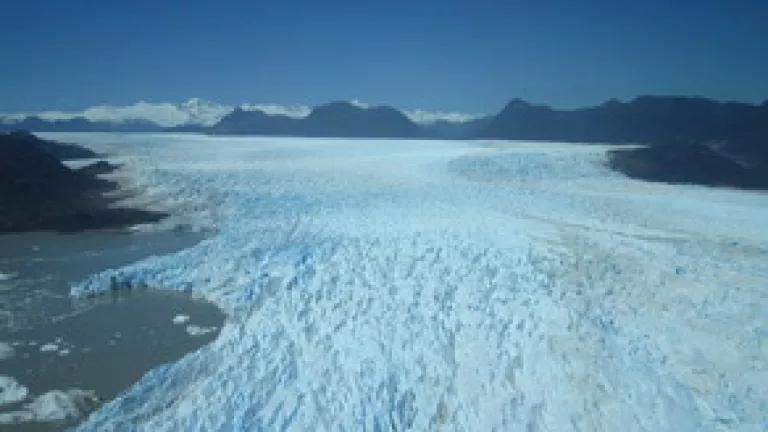
South America’s glaciers are critical reserves of fresh water that support human communities and wildlife in every country where they exist. Unfortunately, these frozen masses are disappearing at increasing rates, as industrial activities, climate change, and altered weather patterns are taking their toll. A few countries in the region are taking encouraging measures to protect their glaciers, but unless the global trend of climate change is halted, glaciers may be heading the way of the dinosaurs.
I have been fortunate enough to see some of these glaciers in person – from above, from below, from a distance and from really close up – and they are always an awe-inspiring sight. When I think about South America’s glaciers, I divide them roughly into two geographic groups: the tropical glaciers of Colombia, Ecuador, Peru and Bolivia, and the temperate and polar glaciers of Chile and Argentina.
Sadly, the region’s tropical glaciers, which comprise roughly 99 percent of the world’s tropical glaciers, received some bad news recently. According to a new study, they have shrunk between 30 to 50 percent since the late 1970s, and could disappear altogether in the 21st century. The cause? The scientists who conducted the study concluded that “variability at the surface temperature of the Pacific Ocean is the main factor…at the decadal timescale.” In layman’s terms, they are saying that the changing climate is the culprit. Another new analysis from Nature complemented this conclusion by finding that the tropics will bear the brunt of climate change impacts as they unfold.
A 2010 study from the United Nations reported similar warnings for Chile’s glaciers, where the Patagonia’s glacial resources have also suffered from climate changes. Experts have measured the Jorge Montt glacier in particular and found that its melting rate is “abnormally fast.”
San Rafael glacier in Chile's Aysen region, from above
Industrial activities – specifically mining – have also raised significant controversy in the area for impacting glaciers. The best known example is the Pascua Lama project, a highly controversial open pit gold mine that straddles the Chile-Argentina border in the Andes. Local towns and environmental and human rights groups have tried for years to stop this mine. In July of this year Chile’s court suspended Pascua Lama’s operations after indigenous communities proved that the company had violated its environmental permits and had damaged glaciers. Another prominent example comes from Chile’s state-owned copper mining company, Codelco, which plans to expand one of its operations to become the world’s most productive copper mine. Many worry that this project –called Andina 244—will damage the 26 glaciers nearby, ultimately impacting the water supply of the 6 million Chileans who depend on that watershed for daily drinking water.
Fortunately, both Chile and Argentina have begun taking steps to address this issue. Argentina became the first in country in the world to pass a law protecting its glaciers in September 2010. This Glacier Protection Act made an important statement to the world, declaring that the country’s glaciers cannot be harmed, disturbed or impacted by anyone, from individuals to multinational companies. The law also established a national glacier registry to catalog, measure and monitor Argentina’s glaciers.
Chile could be the next country to pass a glacier protection law. Parliament has been exploring the idea since 2006, but has not been able to reach consensus yet. At issue is how the law would define a “glacier,” since a broader definition, like the one Argentina uses, could impact Chile’s existing and future mining activities. For example, the Pascua Lama mine, I mentioned above could be shut down for good if Chile opts for a stricter law, since the part of the operation in Chile is virtually surrounded by glaciers and peri-glacial habitat.
Laws such as these may certainly be helpful in protecting the region’s glaciers from industrial threats, and they should certainly be passed and—crucially—implemented to the fullest extent possible. But science has shown that unless we change our ways and reduce greenhouse house emissions around the world, the glaciers of South America, and indeed in other regions, too, likely won’t be here for much longer.

